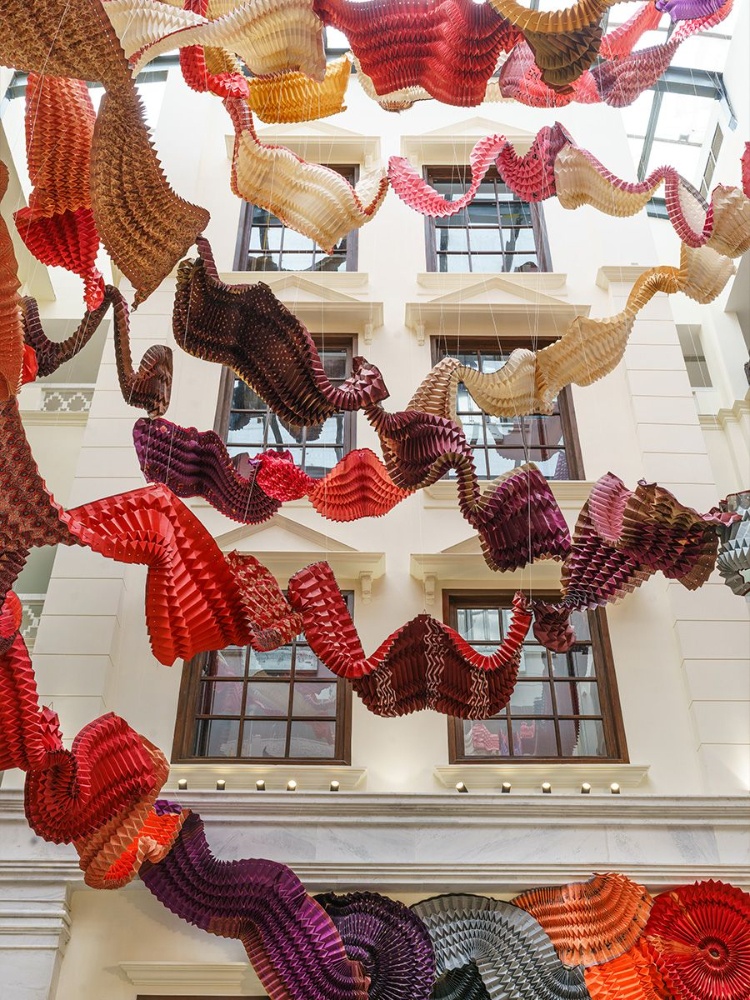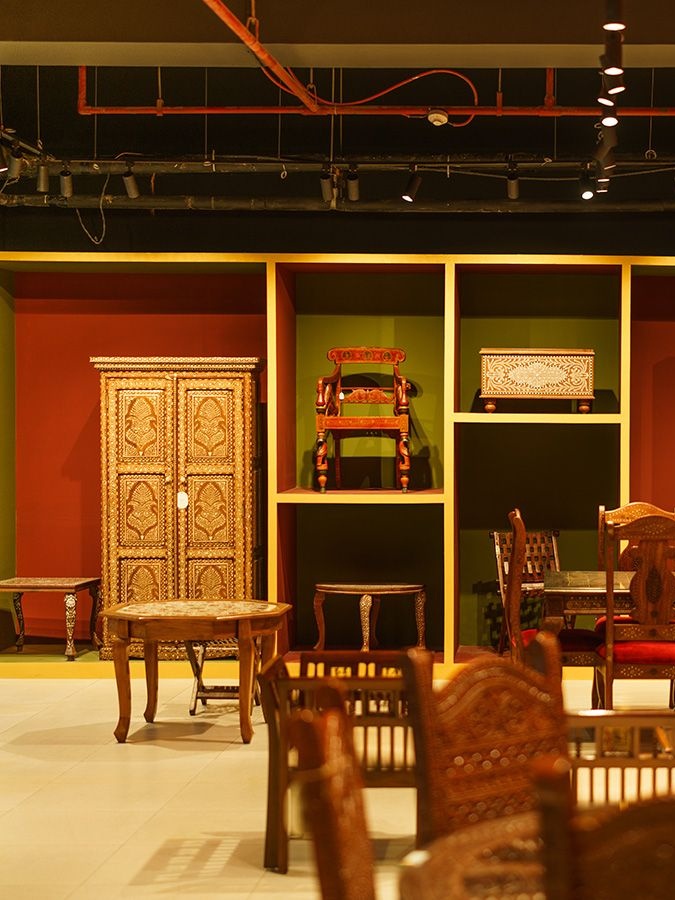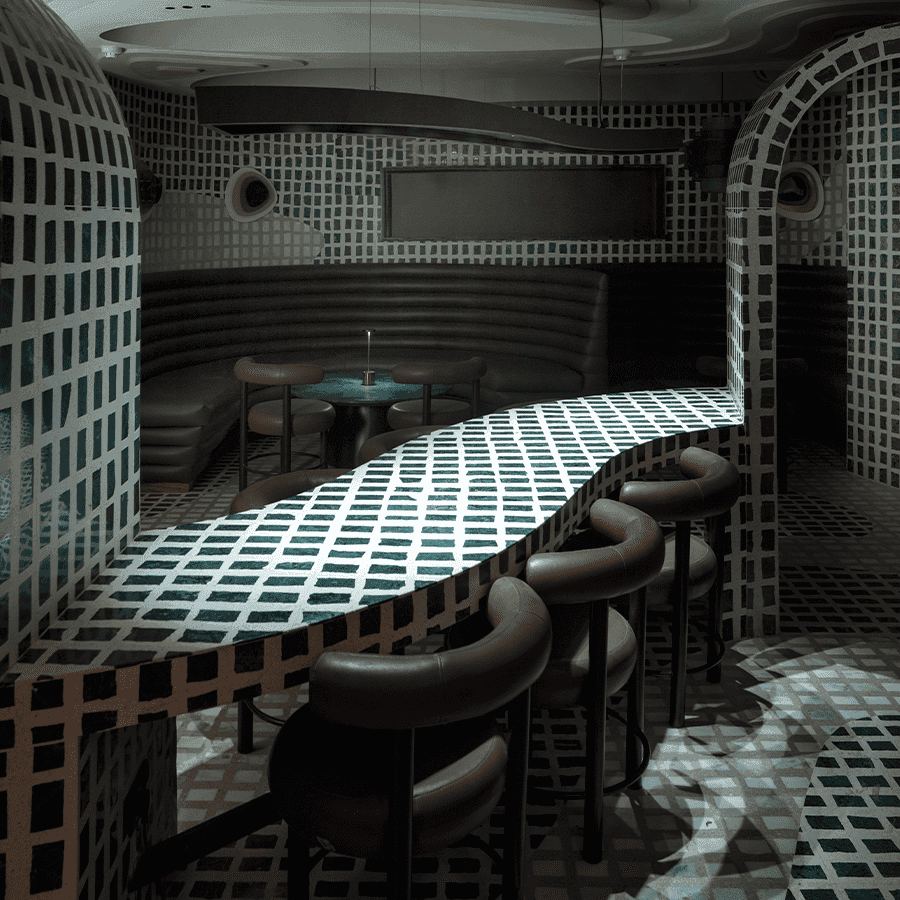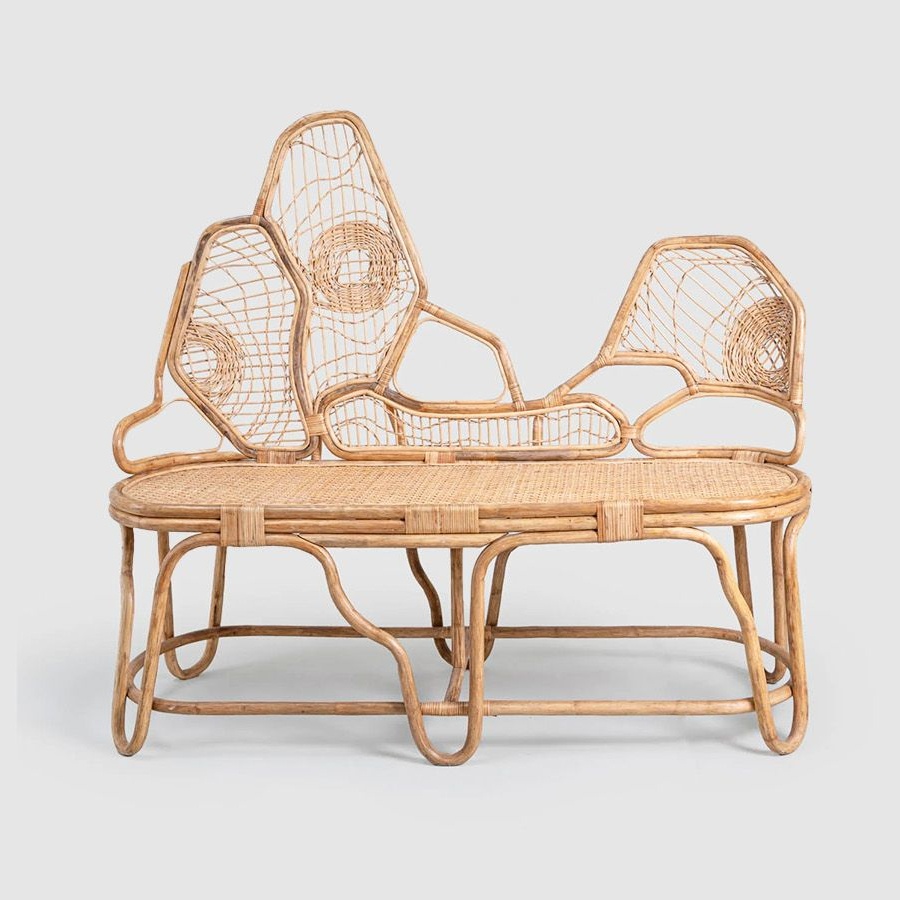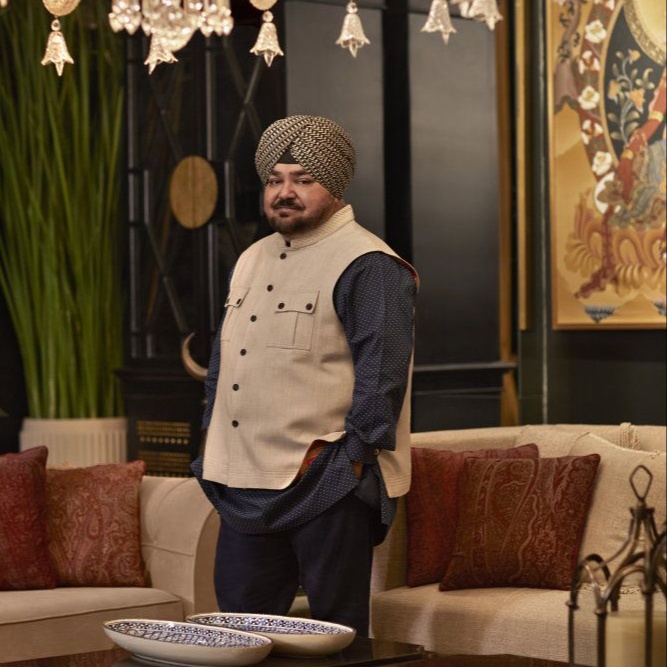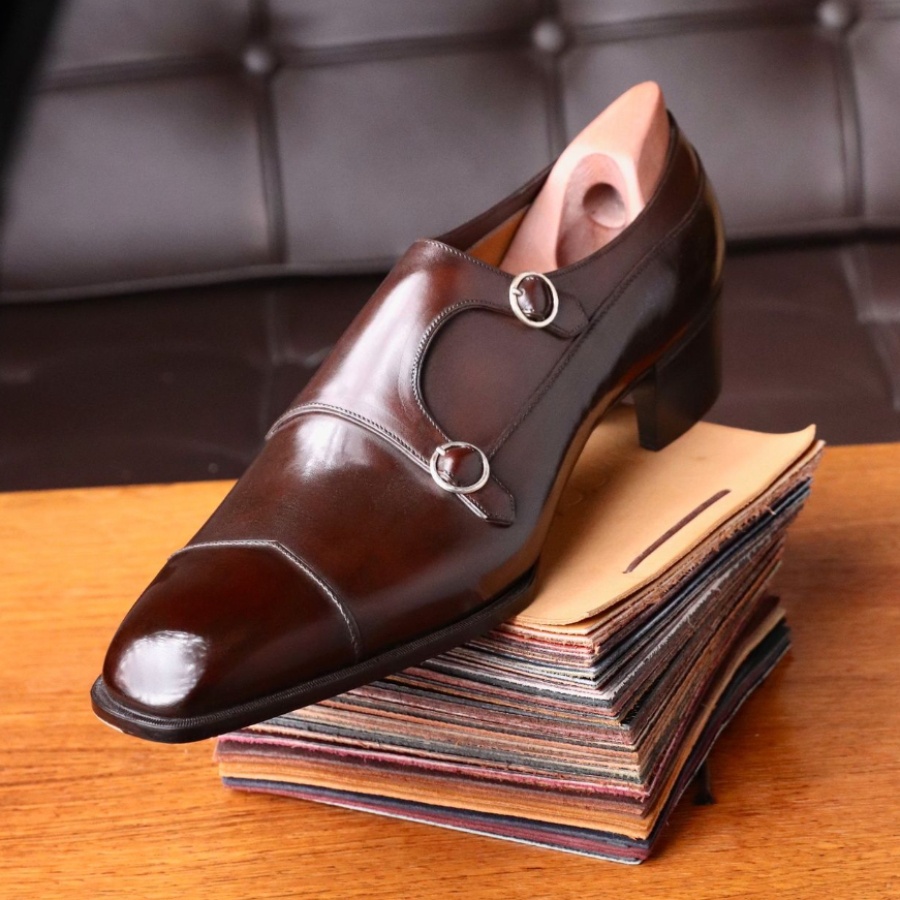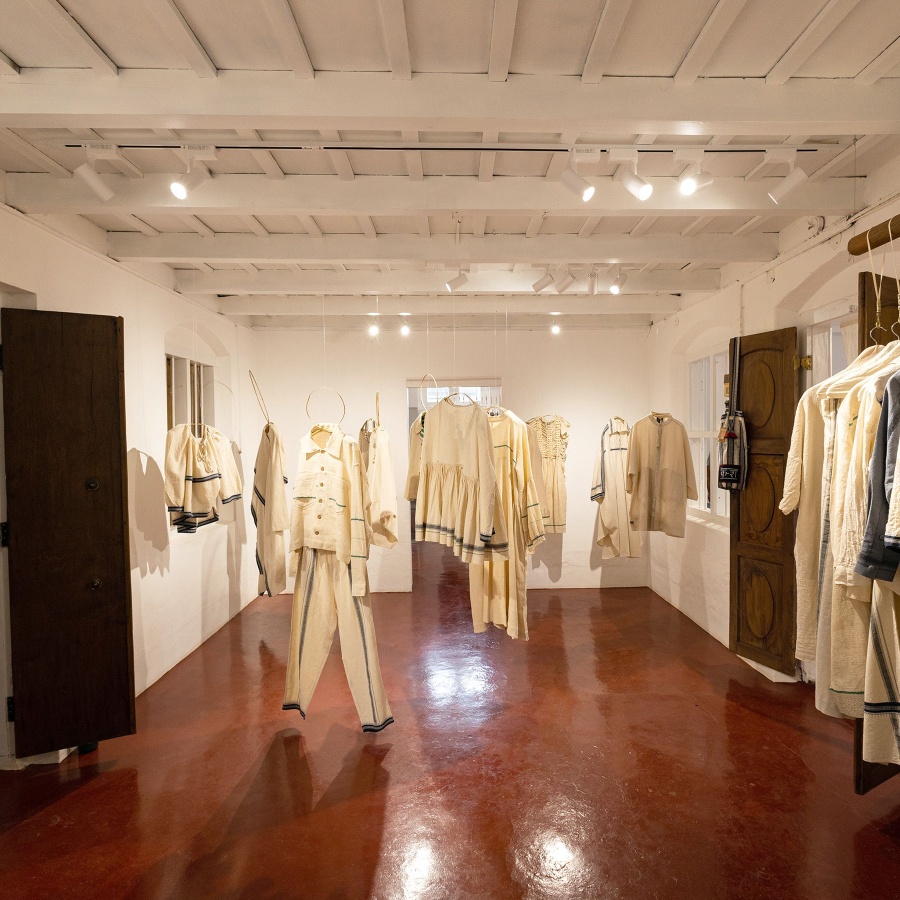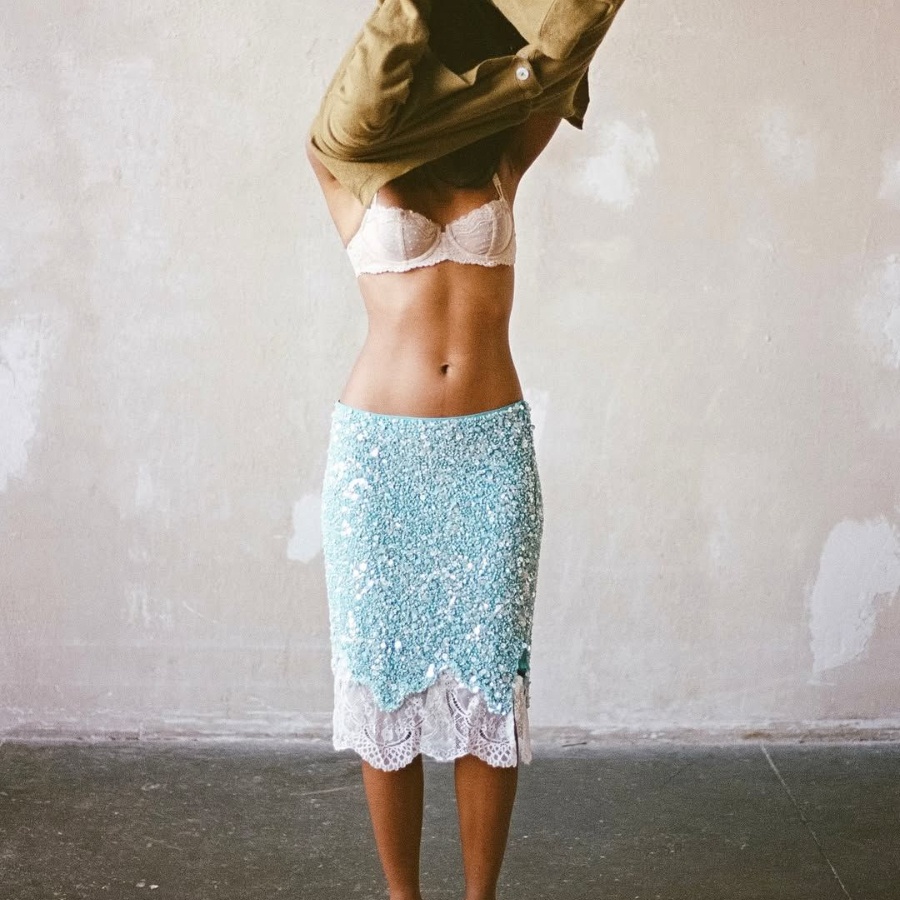Everything in the Jiyo store at The Kunj in New Delhi is eye-catching. Bamboo lamps inspired by Jharkhand’s traditional fish traps glow softly, embroidered Sujani drapes line the walls, trinkets and toys woven from sikki grass line the shelves. Despite the variety on display, the carpet installations inside the store are hard to miss; they’re hand-painted by signboard artists on felt. Rajeev Sethi, curator and founder-chairman of Asian Heritage Foundation, who conceived Jiyo two decades ago, brought the carpets out from his personal collection and will have more made if you ask for it.
Crafts professionals and enthusiasts have long known of Jiyo’s contemporary handlooms and handicrafts. But this is the first time Jiyo has set up shop in a mall. You can visit their outlet at The Kunj, a retail space for Indian crafts by the Office of the Development Commissioner (Handicrafts), which opened its doors in August. Crafts shopping in India usually brings bazaars and exhibitions to mind. In Delhi, especially, the influence of Dilli Haat and Dastkar’s Nature Bazaar—sprawling outdoor spaces that host craftspeople and artisanal labels in a setup resembling a village fair—looms large.
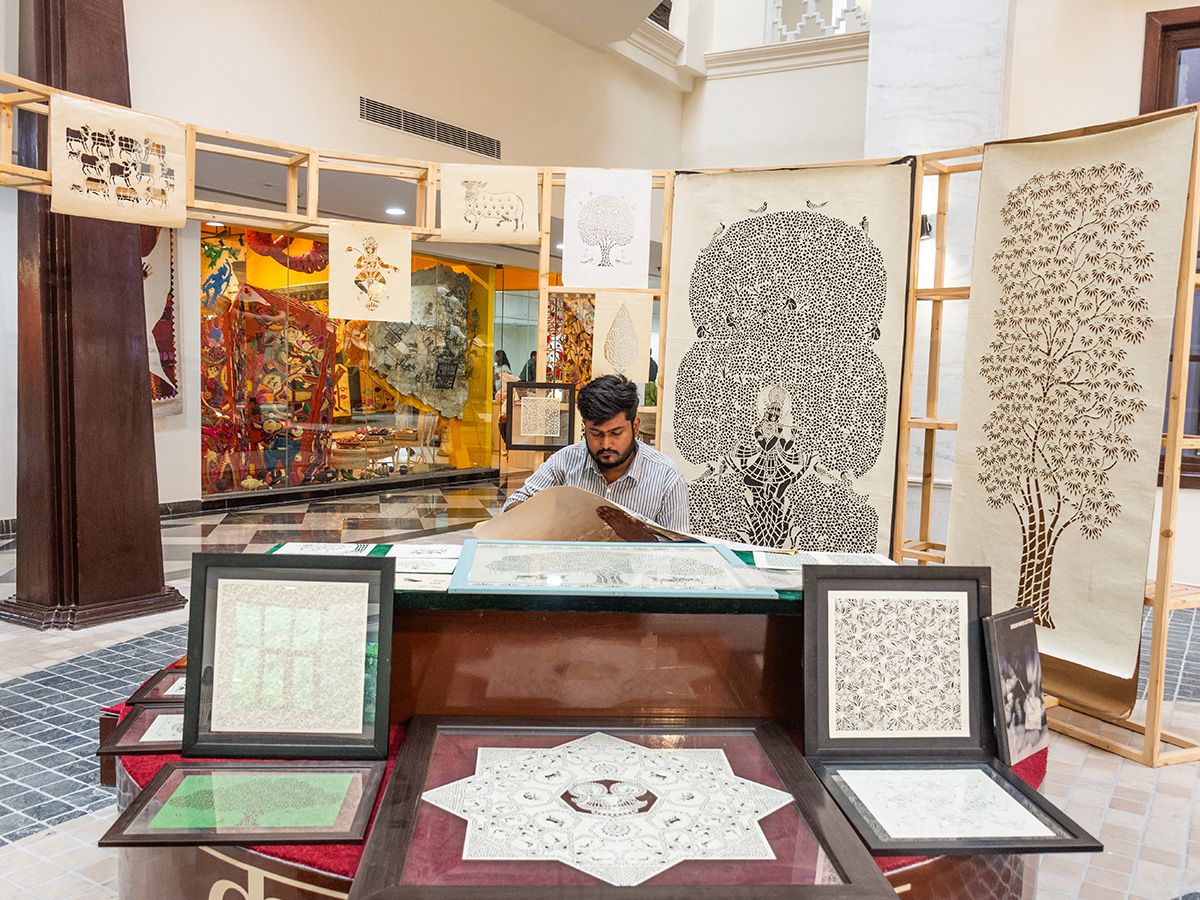
But The Kunj offers something distinct: a luxury mall makeover that wants you to see crafts as cool, not ethnic. For Sethi, a Padma Bhushan awardee who has spent decades working with Indian crafts, the space is not just an of-the-moment retail spot for elevated crafts. It is also the promise of being a showcase of exceptional skills and craft, a “store of excellence that doesn’t have an equivalent in South Asia”.
For customers, however, The Kunj’s real draw is a shopping experience with a difference. Here, you encounter stores and experiences you will simply not find anywhere else. Take Vriksh, for instance, the clothing label by National Award-winning textile designer Gunjan Jain, whose contemporary ikat and tussar silk saris and kimono-style jackets have fans including the likes of Mira Nair and Muzaffar Ali. Or Meghalaya-based designer Iba Mallai’s label, Kiniho, which offers easy, hot-weather-ready dresses in subtle pastel hues. The brand shares space with jewellery brand Runway Nagaland, whose colourful, chunky necklaces and fringe earrings reference traditional Naga ornaments. Next door on the same floor, designers Bhavya Goenka of Iro Iro and Pratyush Kumar of Pieux share another store—two distinct labels with a shared goal of refashioning waste as cool, contemporary styles. The former specialises in pintucked dresses and wearable separates, while the latter’s pop-bright, painterly jackets and modular sneakers definitely made our wishlist.
